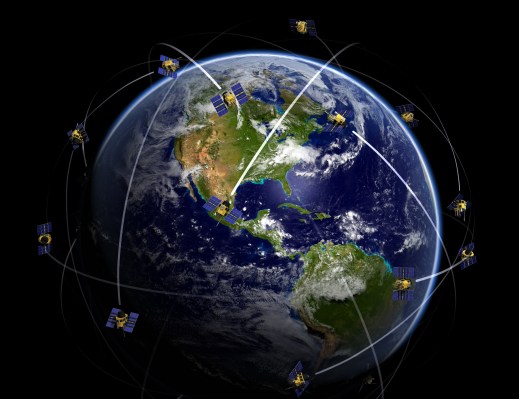SpaceX’s planned communication satellite constellation, known as Starlink, will now be targeting a much lower orbit than originally planned, at least for over a thousand of the satellites, the company revealed in an FCC filing. The move should help mitigate orbital debris and provide better signal for the company’s terrestrial users as well.
Starlink plans to put 1,584 satellites — about a third of the 4,409 the company aims to launch — in an orbit just 550 kilometers about the surface of the Earth. For comparison, many communications satellites are in orbits more than twice as high, and geosynchronous orbits are more than 20 times farther out (around 36,000 miles).
At that distance orbits decay quickly, falling into the atmosphere and burning up after a handful of years. But SpaceX isn’t daunted; in fact, it writes in its application, lower orbits offer “several attractive features both during nominal operation and in the unlikely event something goes wrong.”
In the first place, orbital debris problems are naturally mitigated by the fact that anything in that low orbit will fall to Earth quickly instead of cluttering up the orbit. Second, it should shorten the amount of time it takes to send and receive a signal from the satellites — ping time could be as low as 15 milliseconds, the company estimated. And 500 fewer kilometers means there will be less spreading for beam-based communications, as well.
The satellites will have to do more work to stay at their optimal altitude, as atmospheric drag will be higher, and each one will be able to see and serve less of the planet. But with thousands working together, that should be manageable.
The decision was informed by experimental data from the “Tintin” test satellites the company launched earlier this year. “SpaceX has learned to mitigate the disadvantages of operating at a lower altitude and still reap the well-known and significant benefits discussed above,” it wrote.
This change could lead to competitive advantages when satellite communications are more widely used, but it will also likely lead to a more intensive upkeep operation as Starlink birds keep dropping out of the air. Fortunately a third benefit of the lower orbit is that it’s easier to reach, though probably not so much easier that the company breaks even.
Starlink is aiming for the first real launches of its systems early next year, though that timeline may be a little too ambitious. But SpaceX can do ambitious.
